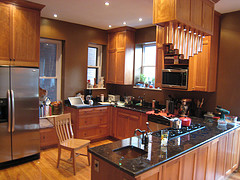- 1 read

Lou Manfredini here, Ace’s home expert. I’ve noticed that too many times we take for granted the inventions that have changed our lives. Take, for example, the electric light, which was invented over 200 years ago and would last only a few hours at first. It took another 80 years to make a bulb that could last for up to 1,500 hours or more!
Over the past four decades, scientists and engineers have been working to create a bulb that uses less energy and lasts longer, and today, consumers are mostly familiar with compact fluorescent light bulbs, or CFLs, which use 2/3 less energy than conventional incandescent bulbs and can last up to six years. The logic of these bulbs is pretty simple, and it’s easy to see why more and more Americans are turning to CFLs.
But not all CFLs are created equal. Some of the bulbs that are priced lower don’t last nearly as long as their more expensive counterparts, while others contain higher levels of mercury, which is damaging to nature if not disposed of properly. Consumers who are really looking to make a difference in both their energy bills and the environment should choose bulbs that come from recognizable names such as GE, Sylvania and Philips. These companies have strict criteria in place when manufacturing their bulbs, which means a better quality, longer-lasting product as the end result. Additionally, GE recently debuted its new incandescent-shaped CFL at Ace Hardware stores across America. While still offering the same energy savings as the original CFLs, these new bulbs have a more traditional shape and a glow that is less harsh.
But technology is always changing, and the future of light won’t be with the CFLs. Instead, look to light-emitting diode (LED) bulbs to become the bulbs of choice over the next ten years. LEDs have been available commercially for a number of years, but their cost has limited residential use; even now, with prices between $30 and $60 apiece, not many people are willing (or able) to fork over the dough to buy them! But they are the future, and you’ll see those prices fall as the technology improves and becomes more widely available.
LED bulbs can last up to 15 years under normal use (!). Their light is noticeably different from both conventional bulbs and CFLs, and currently they are much more suitable for down lighting applications, such as outdoor spots or recessed interior can lights. Recently I have seen new prototypes that promise soon LEDs will do everything a conventional bulb can do: they’ll be dimmable, will fit in lamps better and will even be available in an array of colors. And while there will be a learning curve with these bulbs – just as there was with CFLs – this smarter technology will help all of us control our energy use and be more eco-conscious. For more information or to pick-up these energy saving lights, visit www.AceHardware.com.

